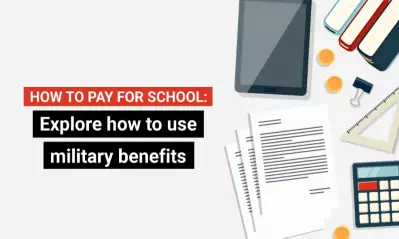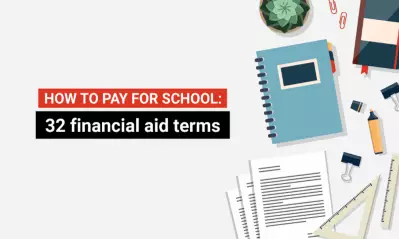What to know about financial literacy for kids

Written by Michael Feder

Reviewed by¬ÝChris Conway,¬ÝDirector of Financial Education Initiatives and Repayment Management

Financial literacy is an important life skill that can be learned earlier than you might expect. It can also benefit the whole family: Teaching kids about how to handle money well can strengthen the entire family’s approach to planning, budgeting and saving. Here’s what to know.
When should financial literacy for kids start?
Financial literacy for kids can begin slowly and naturally. Kids learn how to talk, to walk and to behave by modeling what they see. The same can go for money management. Every time you buy something — groceries, coffee, clothing — gently include your child, even if they are only 2 or 3 years old.
For example, you can say something like, ‚ÄúIt‚Äôs time to pay for our food. Should we count the bills or use the card?‚Äù Giving the option opens the door for more conversation. If you opt to pay with cash, you can practice counting and get your child used to dollar denominations and coins. If you pay with a credit card, you can seize an especially important teaching opportunity for financial literacy for kids.¬Ý
The role of parents in financial literacy for kids
Whether they realize it or not, parents are children’s first money teachers. Everyday family decisions are opportunities to teach and show good financial habits.
Practical ways to involve kids:
- Shopping trips: Compare prices together, look for deals and explain choices.
- Vacations: Show how paying for flights, hotels and meals adds up.
- Bills: Walk them through household expenses like mortgage/rent, utilities, insurance and home improvement supplies to show what it really costs to run a household.
- Chores or side jobs: Encourage earning through chores or things like dog-walking, babysitting or tutoring. Then help them divide their earnings into categories for spending, saving and giving.
Remember, kids learn more from what you do than what you say. If they see you budgeting, saving and resisting unnecessary spending and splurges, they’ll likely model that same behavior.
Everyday ways to teach money basics
Young kids often think the “magic card” has unlimited money. Help them understand the difference between:
- Paying with cash: You spend the money immediately.
- Swiping a debit card: You spend the money immediately, but it comes out of your bank account and must be recorded.
- Swiping a credit card: You borrow money that you must repay after a certain time frame.
Credit cards vs. cash
Young kids often think the “magic card” has unlimited money. Help them understand the difference between:
- Paying with cash: You spend the money immediately.
- Swiping a debit card: You spend the money immediately, but it comes out of your bank account and must be recorded.
- Swiping a credit card: You borrow money that you must repay after a certain time frame.
How to budget
Financial literacy for kids can extend beyond methods of payment to include basic budgeting principles, which leverages income against expenses.
One easy way to get started is to give kids a dinner budget. (This works best for school-age kids around 8 to 12 years old.) For example, if you go to a restaurant, tell them they each have $15 to spend on their meal. Suddenly, they’ll rethink ordering appetizers and sodas when they realize the money won’t stretch that far!
Alternately, put them in charge of a dinner menu when you shop for groceries at the market. Which ingredients will you need for their chosen meal? How much will it cost? Is there anything left over for extras like dessert or drinks?
Another simple way to teach kids budgeting is to give them a set allowance for an outing. Let them decide how to balance needs and wants within that budget. For example, if you go to the movies, the tickets will take up a fair amount of the allotted budget, leaving a finite amount for snacks. You can encourage your kids to save a portion of that budget for something else, but let them make the ultimate call. That, after all, is how they’ll learn.
Why and how to save for goals
Even children know what it’s like to want something they can’t have. But what if that something is moderately attainable, like a pricey toy or experience? It might be a good opportunity to explain the concept of saving for goals.
Start by teaching kids to “pay themselves first.” Whether they receive money as birthday gifts or allowance, encourage them to set aside a portion right away. Even a small savings goal, like reaching $100, helps them develop discipline, patience and pride in achieving something over time.
You can also offer to “match” their savings. If they set aside their own money up to a certain amount, say $100, you can offer to match it with your own $100 to expedite their progress. Whether they’re saving for a rainy day fund, a dream house for their dolls or college, this method provides both incentive and assistance to help instill the foundation of financial literacy for kids.
Setting financial goals as a family
Kids need to see the connection between daily money habits and long-term goals and outcomes. Goal setting brings this to life and is an important part of family financial planning.
Short-term goals (weeks to months):
- Saving $20 for a toy
- Budgeting for a birthday gift
- Building up a small emergency stash
Long-term goals (years):
- Saving for college
- Contributing to retirement
- Budgeting for family goals like vacations or a new car
When kids see that everyone has to make sacrifices to reach a family goal, they begin to understand delayed gratification and the satisfaction of achieving something together.
Building a financial safety net
Emergency funds
Explain that an emergency fund is like a financial backup plan. It helps cover car repairs, medical bills or other surprises without throwing the family into a financial crisis. Kids learn that being prepared reduces stress when life doesn’t go as planned.
Insurance as protection
Insurance may feel abstract to kids, but here are some simple examples that can help them understand:
- Health insurance covers part of a doctor visit.
- Car insurance helps pay for repairs after an accident.
- Home insurance helps cover damage from a fire or other accident.
Kids can better understand insurance as a necessary safety net rather than “just another bill” when it is framed as a safeguard against financial catastrophes.
Investing in your family’s future
Another aspect of financial literacy for kids is learning how money can grow. This can be especially powerful when these principles are applied toward the financial future of your kids. Specifically, you can instruct them about:
- Savings accounts: Show how deposits add up over time.
- 529 plans: A smart way to support college savings and family wealth planning. These accounts offer tax benefits and help cover future education costs.
- Custodial accounts: Flexible savings options parents can set up in a child’s name.
- Basic investing concepts: Teach kids the difference between putting money in a piggy bank or investing in stocks. Even simple “investing games” can show that some choices grow faster than others and that investing also carries risks.
From teaching financial literacy for kids to generating family wealth
At the end of the day, financial literacy for kids is about much more than money. It’s about preparing children to make confident, responsible decisions that benefit themselves and their families for years to come.
By starting these conversations and putting them through real-life examples at home, parents can turn everyday moments into powerful lessons that build lifelong money skills and contribute to building financial stability.
Learn more about financial literacy, including budgeting and saving, at π˚∂≥ ”∆µ‚Äôs Financial Literacy and Wellness Center.

ABOUT THE AUTHOR
A graduate of Johns Hopkins University and its Writing Seminars program and winner of the Stephen A. Dixon Literary Prize, Michael Feder brings an eye for detail and a passion for research to every article he writes. His academic and professional background includes experience in marketing, content development, script writing and SEO. Today, he works as a multimedia specialist at π˚∂≥ ”∆µ where he covers a variety of topics ranging from healthcare to IT.

ABOUT THE REVIEWER
As Director of Financial Education Initiatives and Repayment Management,¬ÝChris Conway works with departments across the University to provide resources that allow students to make more informed financial decisions. She is also an adjunct faculty member for the Everyday Finance and Economics course at the University, and she chairs the National Council of Higher Education Resources College Access and Success Committee. Conway is committed to helping college students make the right financial decisions that prevent future collection activity.
This article has been vetted by π˚∂≥ ”∆µ's editorial advisory committee.¬Ý
Read more about our editorial process.
Read more articles like this:


